Abstract
The ability to predict the symbiotic performance of rhizobia introduced into different environments would allow for a more judicious use of rhizobial inoculants. Data from eight standardized field inoculation trials were used to develop models that could be used to predict the success of rhizobial inoculation in diverse environments based on indices of the size of indigenous rhizobial populations and the availability of mineral N. Inoculation trials were conducted at five diverse sites on the island of Maui, Hawaii, with two to four legumes from among nine species, yielding 29 legume-site observations. The sizes of indigenous rhizobial populations were determined at planting. Soil N mineralization potential, total soil N, N accumulation and seed yield of nonnodulating soybean, and N derived from N2 fixation in inoculated soybean served as indices of available soil N. Uninoculated, inoculated, and fertilizer N treatments evaluated the impact of indigenous rhizobial populations and soil N availability on inoculation response and crop yield potential. The ability of several mathematical models to describe the inverse relationship between numbers of indigenous rhizobia and legume inoculation responses was evaluated. Power, exponential, and hyperbolic functions yielded similar results; however, the hyperbolic equation provided the best fit of observed to estimated inoculation responses (r2 = 0.59). The fact that 59% of the observed variation in inoculation responses could be accounted for by the relationship of inoculation responses to numbers of indigenous rhizobia illustrates the profound influence that the size of soil rhizobial populations has on the successful use of rhizobial inoculants. In the absence of indigenous rhizobia, the inoculation response was directly proportional to the availability of mineral N. Therefore, the hyperbolic response function was subsequently combined with several indices of soil N availability to generate models for predicting legume inoculation response. Among the models developed, those using either soil N mineralization potential or N derived from N2 fixation in soybean to express the availability of mineral N were most useful in predicting the success of legume inoculation. Correlation coefficients between observed and estimated inoculation responses were r = 0.83 for the model incorporating soil N mineralization potential and r = 0.96 for the model incorporating N derived from N2 fixation. Several equations collectively termed “soil N deficit factors” were also found to be useful in estimating inoculation responses. In general, models using postharvest indices of soil N were better estimators of observed inoculation responses than were those using laboratory measures of soil N availability. However, the latter, while providing less precise estimates, are more versatile because all input variables can be obtained through soil analysis prior to planting. These models should provide researchers, as well as regional planners, with a more precise predictive capability to determine the inoculation requirements of legumes grown in diverse environments.
Full text
PDF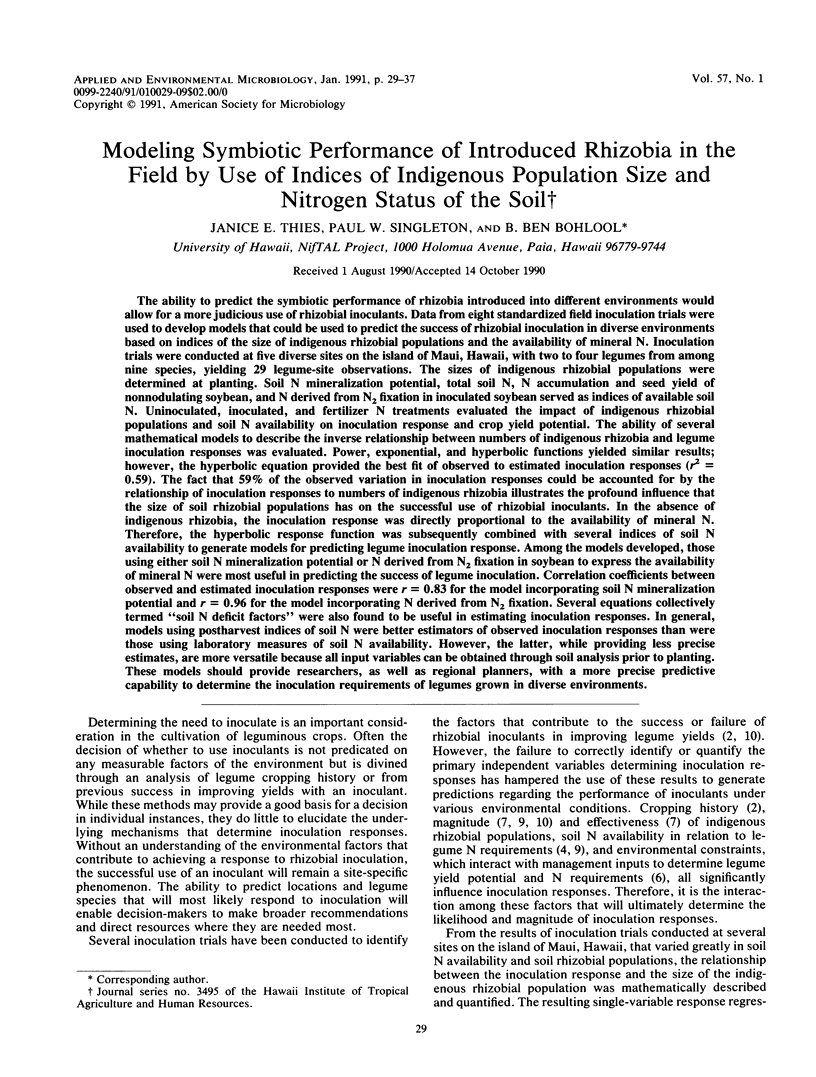
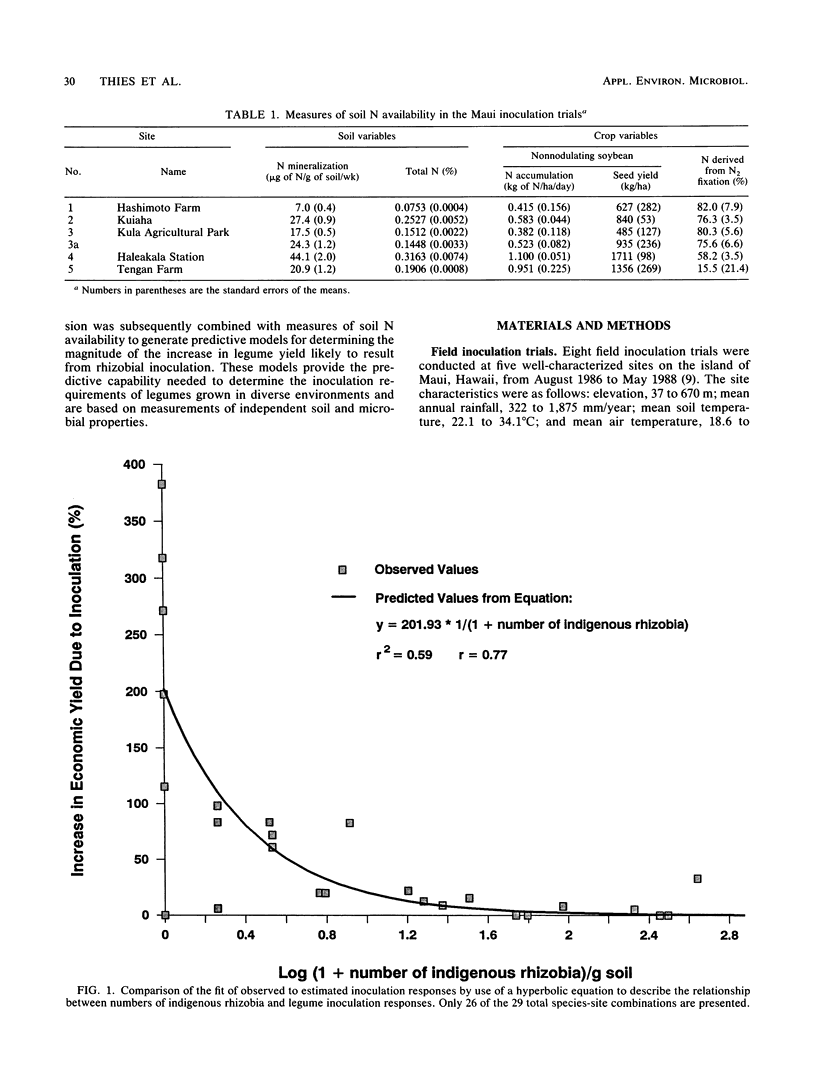
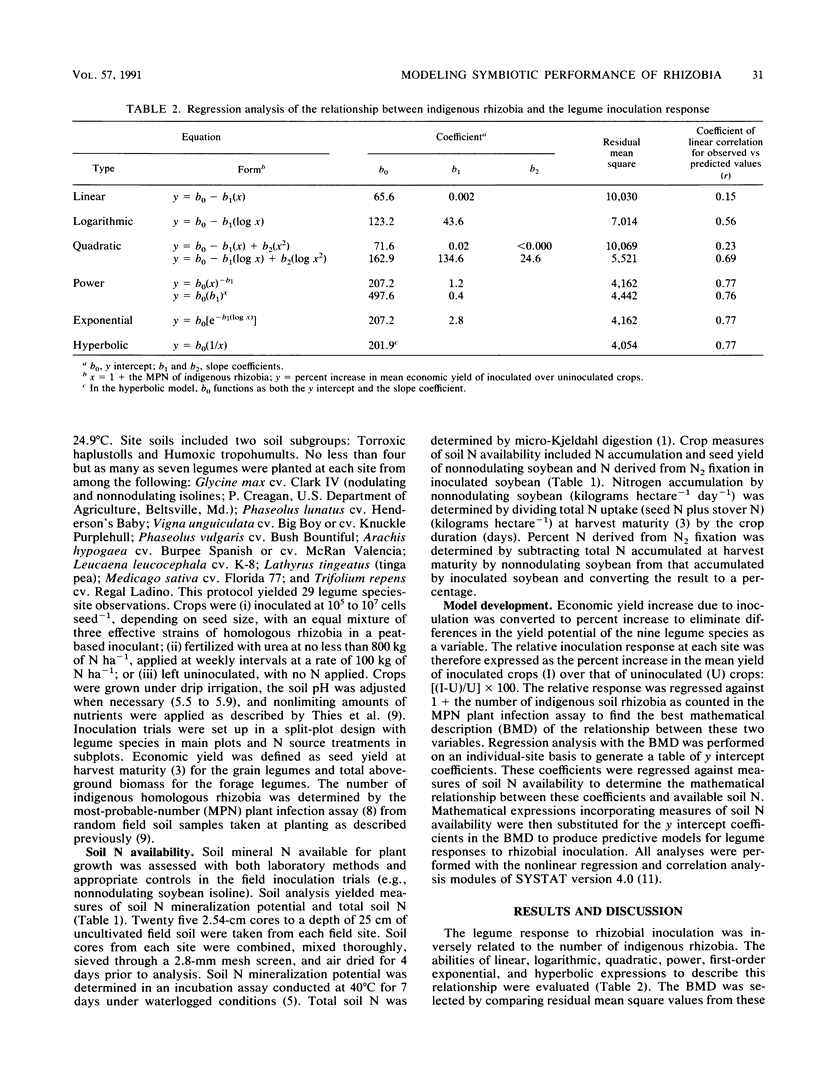
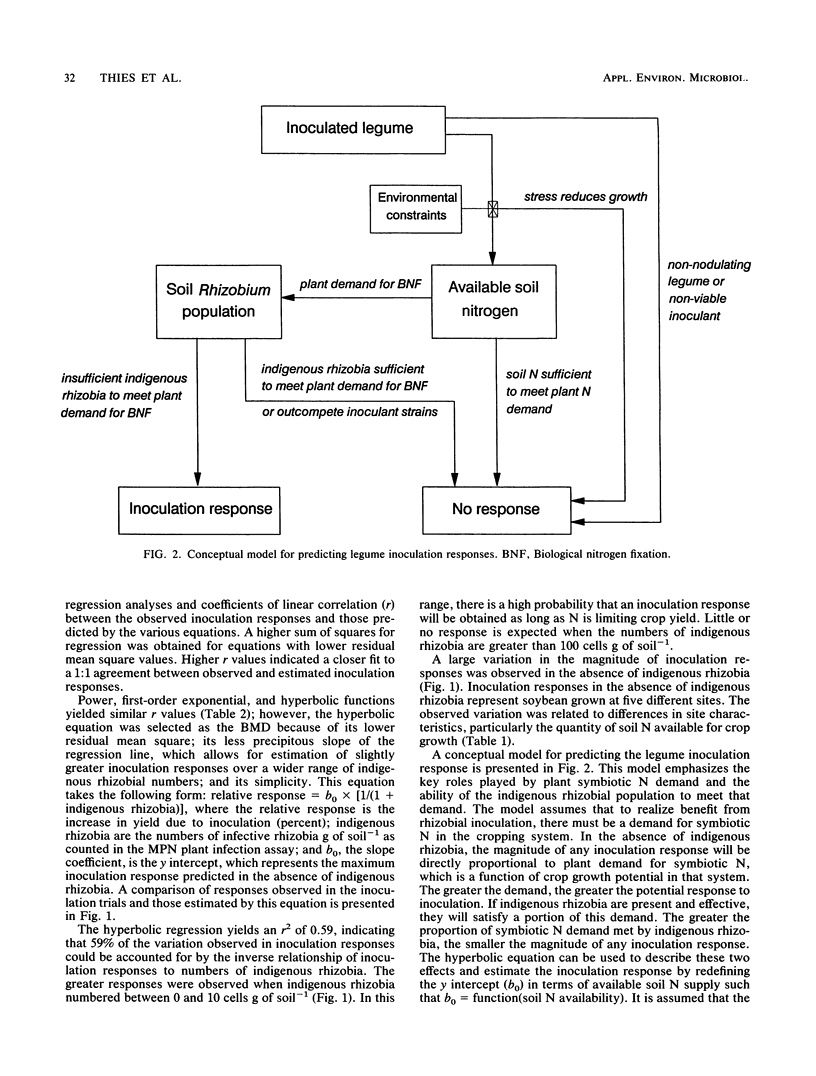
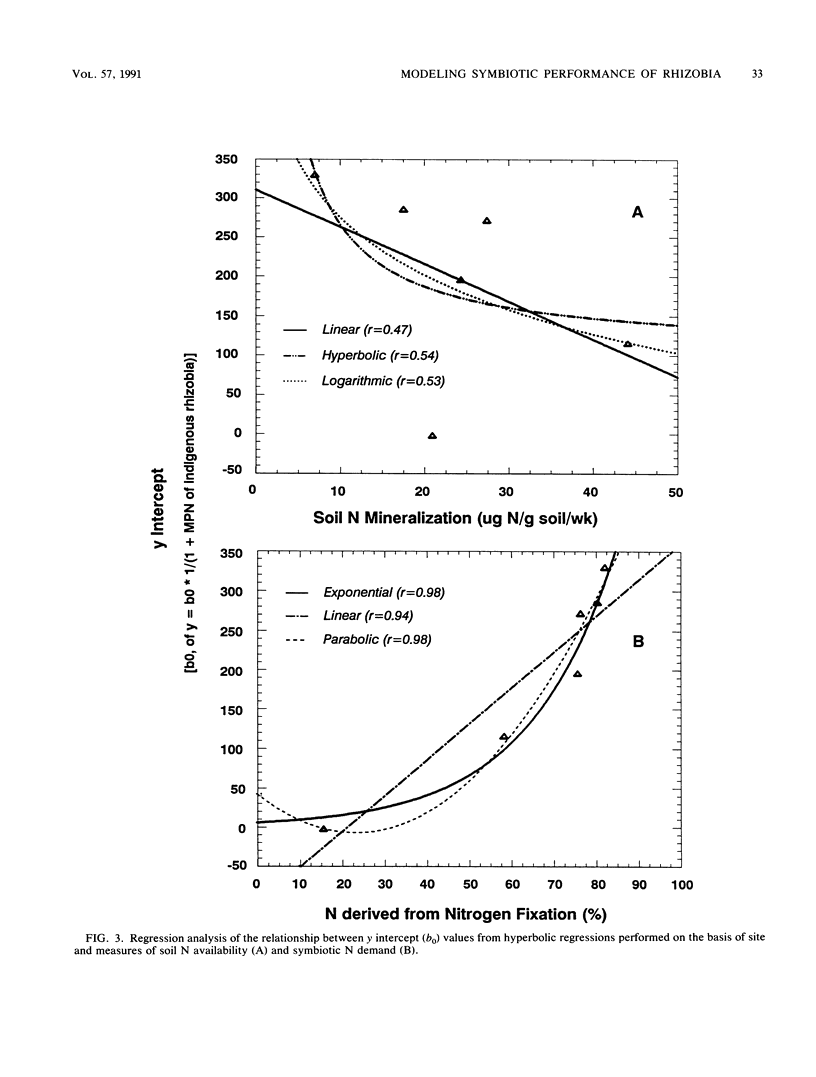
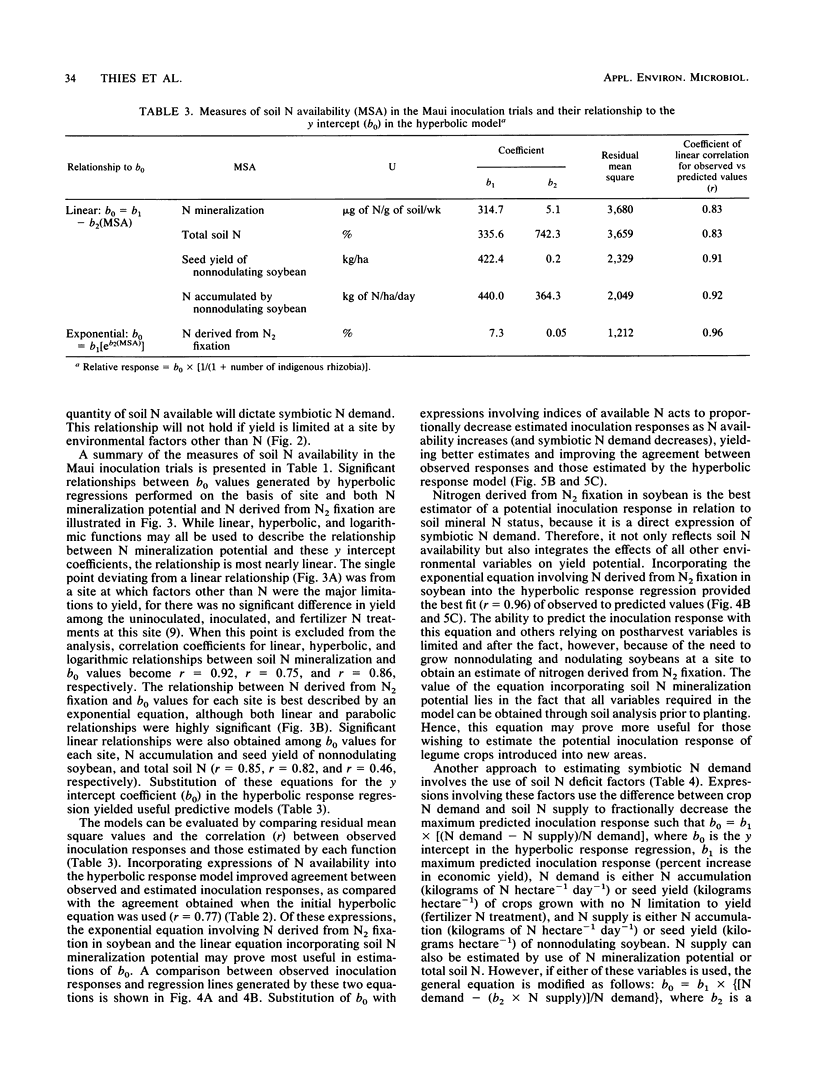
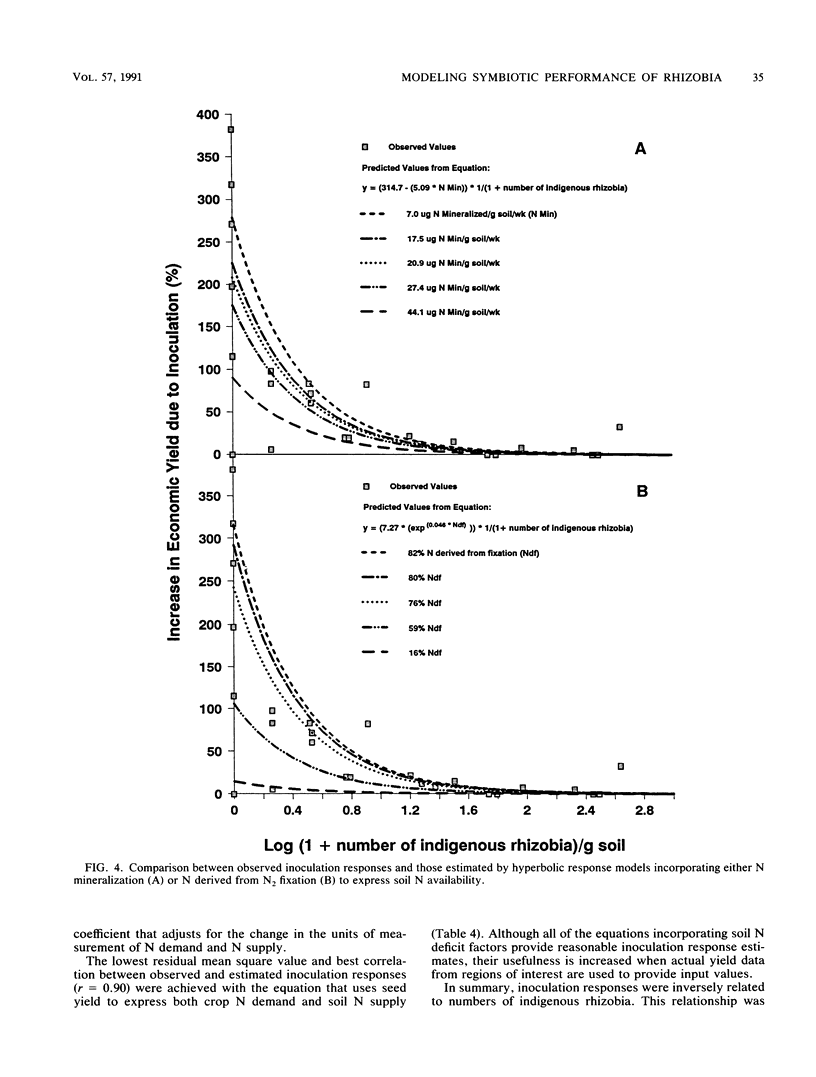
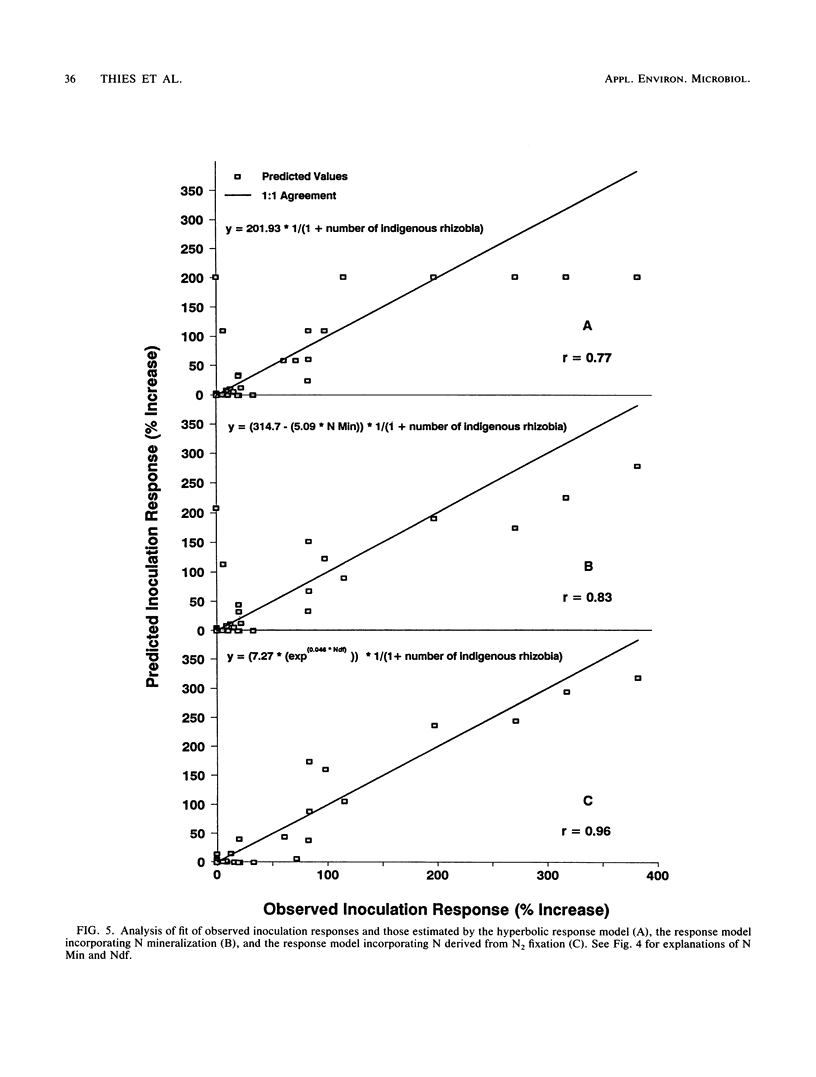
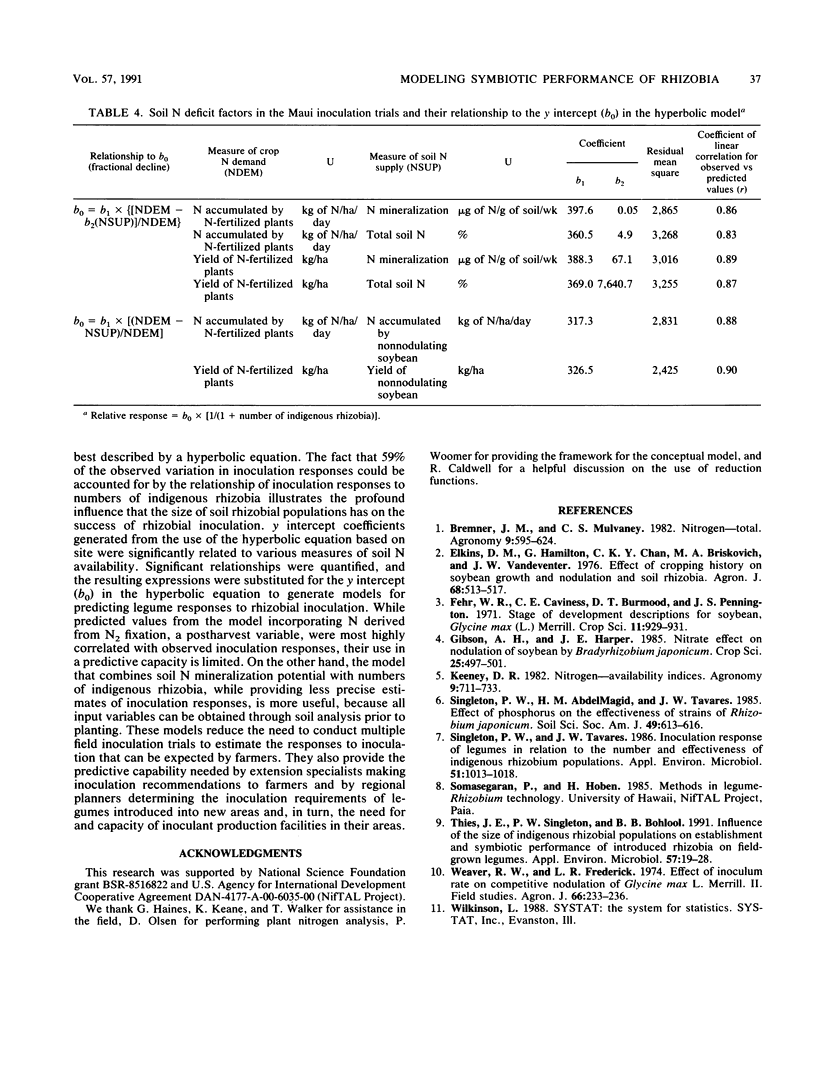
Selected References
These references are in PubMed. This may not be the complete list of references from this article.
- Singleton P. W., Tavares J. W. Inoculation response of legumes in relation to the number and effectiveness of indigenous Rhizobium populations. Appl Environ Microbiol. 1986 May;51(5):1013–1018. doi: 10.1128/aem.51.5.1013-1018.1986. [DOI] [PMC free article] [PubMed] [Google Scholar]
- Thies J. E., Singleton P. W., Bohlool B. B. Influence of the size of indigenous rhizobial populations on establishment and symbiotic performance of introduced rhizobia on field-grown legumes. Appl Environ Microbiol. 1991 Jan;57(1):19–28. doi: 10.1128/aem.57.1.19-28.1991. [DOI] [PMC free article] [PubMed] [Google Scholar]


